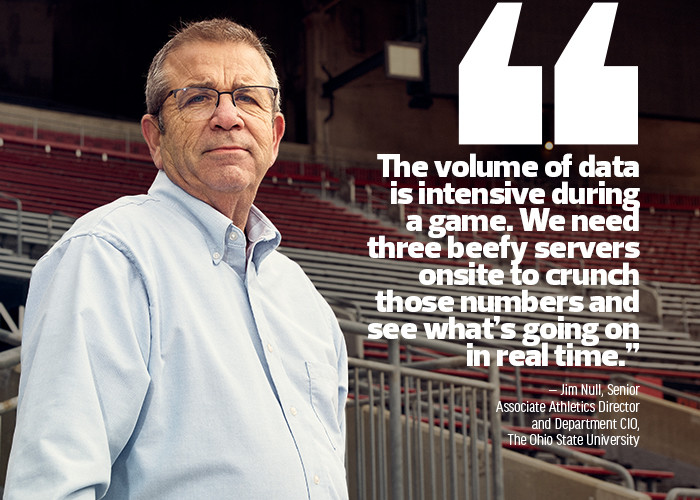Modernized Infrastructure Supports Crowd Intelligence Solutions
To better manage crowds, Ohio State standardized on WaitTime’s AI-based crowd intelligence software, IP video cameras from Axis Communications and three Dell servers to store and analyze the video and data, says Jim Null, Ohio State’s senior associate athletics director and department CIO.
The university purchased the technology from CDW Education, which helped Null assess the university’s needs and determine its technology requirements for the project.
“The volume of data is intensive during a game,” he says. “We needed three beefy servers onsite to crunch those numbers and see what’s going on in real time.”
Ohio State’s athletics department launched the project in 2023 as part of an ongoing effort to improve the stadium experience.
In 2019, the university installed 1,750 Wi-Fi 6 HPE Aruba wireless access points to provide fans fast internet speeds. In 2021, the team implemented mobile ticketing to expedite entry into the stadium and added cashless payments to speed concessions purchases, Null says.
The Wi-Fi project, which included 58 network switches across 34 data closets and miles of cabling, provided the network infrastructure the team needed to implement the crowd intelligence software, he says.
DIVE DEEPER: Three factors to consider for a successful transition to Wi-Fi 6E.
“When our stadium was built in 1922, technology wasn’t even thought of. So, the Wi-Fi and networking infrastructure enabled these other projects,” Null says.
To gather crowd analytics, Null and Derr collaborated with the university’s facilities department and the stadium’s food and beverage vendor to track lines and wait times at 95 stadium locations. Restrooms account for 60 percent of these, followed by concession stands and soda refill stations, at 30 percent and 10 percent, respectively.
Last summer, the university mounted Axis cameras above these locations and connected them to the stadium’s network with CAT 6 cabling. Most locations could capture the queue of fans with one camera, but some locations needed two cameras, Null says.
The university completed the installation in September 2023, right before the first game of the season. Ohio State and WaitTime spent that season testing the technology and validating the accuracy of the data it produced, Derr says.
“We wanted to make sure the data the AI technology was producing was correct, so the WaitTime team spot-checked the video footage, watched the cameras and did calculations by hand to make sure it worked accurately,” he says.













